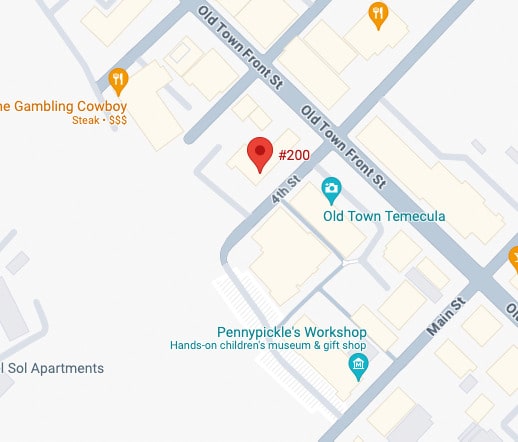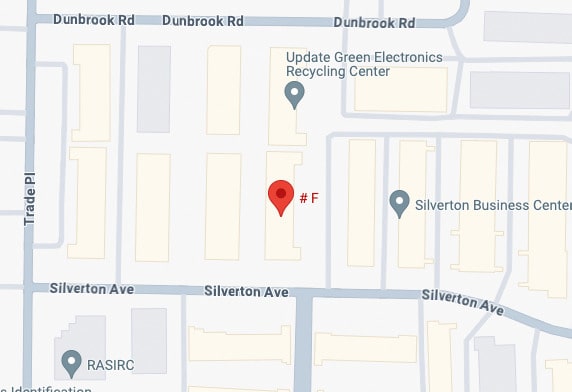Personal property rights are guaranteed for every citizen, including the right not to be deprived of using and possessing the property. Based on this, the California Penal Code makes provisions against theft and classifies various actions as theft crimes.
Obtaining meaningful information regarding theft crimes is necessary to ensure that you understand the charges and legal consequences that convicts face. Further, the information can help you prepare defenses and make necessary arrangements in the event of an arrest.
Upon arrest, you will face detention until you can exit jail by posting bail or bond. At times, the bail amounts are hefty, and you may be unable to afford an upfront payment to secure your release. So, you need to contact an experienced bail bond service to help arrange your bail bond release.
They will also provide guidance and support on additional factors to consider if you face arrest for theft. With the right bail bonds service, you will receive excellent services that aim to help you regain your freedom after you face arrest for theft.
The Nature of Theft Crimes
The California Penal Code is the main legal provision prohibiting theft under Section 484. Under this section, theft crimes fall into different categories, each providing different crime elements and penalties for those found guilty.
A broad definition of theft under the legal provision describes the offense as taking possession of another person’s property without consent and depriving the owner of it permanently. Based on the definition, theft may take various forms depending on different case circumstances.
Many theft offenses attract misdemeanor charges and penalties, resulting in possible jail sentences and fine orders. By understanding the different forms and types of theft crimes, you can better defend yourself and avoid legal repercussions.
Understanding Different Forms of Theft
Any person accused of committing theft will have used specific behavioral patterns to obtain another person’s property illegally. Due to this, law enforcement officers must provide a report on the form of theft you participated in. The following are the primary forms of theft:
1. Theft Using Force and Violence
You are liable for theft charges when you use violence or other forceful means against a property owner. Parties accused of theft by violence often rely on weapons, physical force, or threats to have the victims surrender their property.
After the trial begins, the prosecutor in your case must prove the following elements of the crime:
You Obtained Property Belonging to Another Person
Acquiring property that belongs to another person means taking physical and legal ownership. When presenting on taking physical ownership, the prosecutor should elaborate on how you moved the property from one place to another. You should note that the prosecution team only needs to show that you moved the property, regardless of the distance's length.
Taking legal ownership means changing the ownership title for the property in question. Doing this may involve asking the owner to alter official documents using fraudulent reasons as persuasion. Alternatively, you may have changed ownership without the owner’s knowledge.
You Used Violence or Threats to Coerce the Property Owner to Give You the Property
Violence involves exercising power to influence the property owner’s decision. Your actions may include using weapons like guns, pistols, sharp knives, or other explosives. The prosecutor must also show that you used force or violence against the property owner with the intention of influencing their decision.
The Owner Intended to Retain Ownership of the Property
Since theft by violence involves forcing the property owner to give up their possessions, the prosecutor should establish the coercion element in their case. The victim’s testimony will be the primary evidence in court to support the prosecutor’s case further. Moreover, surveillance footage and police reports can also provide the proof necessary for your prosecution.
You Intended to Deprive the Owner of their Property Permanently
The permanent deprivation of property is a core element of any theft crime, meaning that the prosecutor must demonstrate it in any theft case. An intention to permanently deprive another of their property disregards the penal code provisions, hence warranting a conviction.
To demonstrate your intentions, the prosecutor will mainly rely on circumstantial evidence that shows your efforts to take possession of the property. Various evidential sources to help with this include footage, testimonies, and exhibits of the property retrieved after your arrest.
2. Theft by Larceny
Committing theft by larceny means taking another person’s property and carrying it to a different location to deprive the rightful owner of it. It involves disregarding the need for consent before taking another’s property. As a result, the property owner is likely to suffer losses, as they are unaware of the accused’s actions until they discover their missing property.
Elements of crime related to this form of theft are:
You Took Possession of Another Person’s Property
Taking possession must include physically removing the property from the owner, resulting in the deprivation of the item. The prosecutor can show that you took control of the property in court, even if you only moved it slightly.
Additionally, taking possession does not necessarily mean using the property and enjoying its benefits at the victim’s expense. You are still answerable for the offense if you only removed the item from the owner’s reach without exploiting it for gains.
You Lacked Consent to Take the Property
Theft by larceny often involves taking another’s property when unaware, meaning you did not seek their consent. Due to this, they have a legal claim against you for violating their property rights and preventing them from enjoying the property.
In court, the prosecutor’s primary goal is to demonstrate that you did not engage the victim before taking their property, meaning they did not have the chance to consider your request for the property and give their decision.
You Moved and Kept the Property for an Unspecified Period
After taking possession of the stolen property, the prosecutor must establish that you stayed with the property for a significant period. The duration of keeping the property in your possession may vary, and the prosecutor’s primary goal is to demonstrate that you had it with you illegally. Therefore, you are still answerable even if you only stayed with the stolen item for a short time.
You Had a Criminal intention to Permanently Deprive the Owner of the Property Use
The prosecutor should show that you intended to retain the victim’s property permanently, which is a distinguishing factor between theft and other property crimes. The intention to permanently deprive means you did not consider returning the property, contravening Section 484 PC.
3. Theft By Invasion of Person
Invasion of a person means accessing property directly from the person, either from their body or their personal belongings. It is one of the more commonly reported theft types, mainly because of how dynamic the elements of the crime are. They include:
You Intentionally Took Someone’s Property From the Person
Theft by invasion of person means you accessed the property in question directly from their body, or from a possession they held. For example, pickpocketing and grabbing items on the street are examples of theft by invasion of person.
Sometimes, your case may also involve stealing items from personal possessions that the owner left temporarily unsupervised. For example, if they left their jacket, purse, or laptop bag and you took items from it, you are also answerable for theft.
You Intended to Access the Property Without the Owner’s Knowledge
Apart from demonstrating that you took the owner’s items from the person, they should also demonstrate that you made an effort not to be identified. Based on this, the prosecutor may request that the victim testify in court about the circumstances leading up to the loss of property. The information can further compliment the prosecutor’s position.
Common strategies that arrested suspected offenders apply include pretending to help you with a problem. Additionally, they may cause false commotion to confuse you, or take your property in fast succession without your comprehension. The result is a loss of ownership based on concealed theft.
You Intended to Deprive the Owner of their Property Permanently
Upon gaining access to the property in question, you must have intended to permanently deprive the victim of their property, resulting in a criminal offense. For example, if you pickpocketed a phone and escaped with it, the prosecutor will have demonstrated your criminal intention. The action to escape indicates that you did not intend to return the phone, warranting your arrest.
Common Types of Theft Crimes
Theft crimes discussed in the Penal Code take any of the four forms of the offense, and each attracts different penalties after a conviction. Some common theft crimes prohibited by the law include:
Grand and Petty Theft
Provisions under Section 487 of the Penal Code elaborate on grand and petty theft offenses. The main distinction between the two offenses is primarily based on property value. Petty theft charges apply when a suspect faces accusations of stealing items below $950.
Conversely, grand theft charges apply for stealing property worth $950 or more. Further, you may be charged for stealing property within a prohibited classification. For example, stealing drugs attracts grand theft charges regardless of whether the value was $950.
Penalties for the Offense
Petty theft results in misdemeanor charges as provided for under Section 486 of the Penal Code. Convicted persons will face a jail sentence of up to one year, and the judge may vary the sentence depending on your case circumstances.
As a felony, you may receive a jail sentence lasting between sixteen months and two or three years. The difference in penalties applies based on the severity of your case. For example, if you are a repeat grand theft offender, you risk facing harsher terms than a first-time offender.
Grand Theft Auto
Section 486(1)(d) prohibits anyone from taking possession of vehicles without consent and depriving them of their owners permanently. Anyone arrested for contravening the provisions faces grand theft auto charges, which can attract felony or misdemeanor penalties.
Penalties for Committing Grand Theft Auto
A misdemeanor charge for committing grand theft auto results in a jail sentence of up to one year, while a felony charge attracts a penalty of up to three years. Since the presiding judge must vary your sentence, they consider additional elements that could aggravate or mitigate your case.
For example, if you caused harm to the vehicle owner when taking the car, your case will include aggravating factors. Similarly, selling the vehicle for personal gain may slow case investigations, resulting in a harsher penalty.
Mitigating factors include providing justifications for your actions. For example, if you only briefly used the car during emergencies, you can raise this as a defense. However, you must submit credible evidence to support your position.
Receiving Stolen Property
Legal repercussions also apply to parties who receive stolen property despite not actively participating in the theft. You are liable for theft if you bought, sold, held, or concealed any stolen property, resulting in its permanent deprivation from the rightful owner.
The main elements of the crime that attract the charge are that you should know that the goods you received were stolen or obtained through extortion. The reason for convicting a person who receives stolen property is because they aid in perpetuating the offense.
Penalties for Receiving Stolen Property
Upon arrest for receiving stolen property, you may face misdemeanor or felony penalties, as the offense is a wobbler crime. Parties facing misdemeanor penalties may spend up to one year in county jail, while those facing felony penalties may serve up to three years.
Mail Theft
Taking any mail that belongs to another person without their consent is a theft crime prohibited under Section 530.5e of the Penal Code. Under the provisions, "mail" includes any packages, letters, bags, or letters posted through a depository or mailbox to the addressed recipient. Consequently, the recipients may miss important information or goods that belong to them.
The offense takes on various forms, including destroying the mail by tearing it up or reducing the quality of mailed goods. Further, you may face charges for using fraudulent means to acquire mail that belongs to someone else. Opening the central compartment and removing part of the contents inside may also attract criminal charges and penalties, as it contravenes the Penal Code provisions.
Penalties for the Offense
Mail theft is a misdemeanor offense in California, resulting in a jail sentence of up to one year or a fine payment order of up to $1000. The judge may also order restitution payments to victims who could not enjoy the goods mailed to them because of their actions. If so, you need to clear with the court after making the payments before the judge can close your case.
Burglary of a Safe or Vault
When you enter a building with the intention to commit theft or any other crime, you face burglary charges. Additionally, any intention to forcibly open up a safety vault or any other area used for secure storage is an offense under Section 464 of the Penal Code.
Burglary of a safe or vault is a serious offense in California because it involves using explosives or torches to gain access to the safe or vault, creating dangerous conditions. Further, the offense attracts harsh penalties because it often involves forceful entry into banks, businesses, and homes.
Penalties for the Offense
Upon arrest, you will face felony charges that attract penalties of up to seven years in jail or prison. The judge may adjust your sentence depending on your particular circumstances.
Shoplifting
Theft may also occur in a commercial establishment when you take an item from a merchandise store and leave without paying for it. The offense is prohibited under Section 459.5 of the Penal Code and may attract a fine, imprisonment, or probationary penalties.
In court, the prosecutor must prove that you intended to permanently deprive the merchandise owner of their goods and that you did not intend to pay for it. The prosecutor will work towards presenting relevant evidentiary sources to support their case.
Penalties for the Offense
Shoplifting charges attract misdemeanor charges in California, so you may face up to six months in county jail or fine payment. Additionally, the presiding judge can include restitution orders, meaning that you must repay the shop owner for the stolen items. The value of the restitution fee should match the product value to ensure that the owner does not suffer losses.
Overall, navigating the criminal system requires you to have strong defenses prepared. You can do this by exiting jail through your bail bond service provider for the most effective preparation process.
Contact a Bail Bond Service Near Me
When you face theft, crime charges, and arrest, you will be in detention until you take active steps to apply for your release. Among the options for release is working with a bail bonds company to process your exit from jail on bail and bond. Once out, you can prepare for the upcoming trial and return to your everyday life.
At Justice Bail Bonds, you will work with a highly skilled and experienced bail bond service that understands the importance of your speedy release. If you have been arrested for a theft crime in Temecula, California, please contact us to seek assistance with bail bond release at 714-541-1155.










